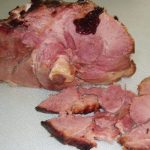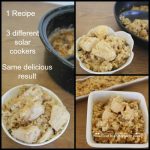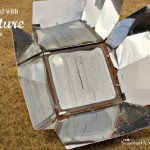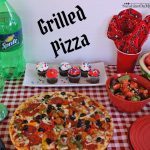SOLAR COOKING TIPS AND TECHNIQUES FOR A BOX OVEN
So you finally bought (or made) a solar box oven. You are standing there looking at it and wondering “Now what do I do”. Here are some helpful tips and techniques to get you started.
SUNSHINE 
- Pick a clear, sunny day. Don’t worry if there are a few clouds passing over, but you will need at least 30 – 45 minutes of good sun each hour.
- The outside ambient air temperature has only a moderate effect on performance. A well-insulated solar oven will cook even in cold weather.
- Wind can rattle the reflectors and rock the ovens. Strong wind can even flip over most ovens, so find a sheltered spot if possible.
- Place the solar oven in a sunny spot. Position the oven so that it is facing directly into the sun, with little or no shadow. Reposition the oven as often as necessary to keep it pointed into the sun.
- Get an early start. Some foods take longer than others. Best cooking times will vary depending on the part of the country, but best cooking times in the summer are generally between 10 am and 4pm. Cooking times in the winter may be reduced. But don’t let that limit you. If the sun is out, put it out.
 COOKWARE
COOKWARE
- Use dark pots with tight lids. Shiny pots reflect the heat.
- Thin metal heats up quickly. Granite ware cookware is popular.
- Cast iron pots heat up slowly, but hold the heat well.
- Dark glass pots and pans can be used.
- Canning jars make great cooking vessels. The two piece lid keeps the lid from creating a seal. If using a one piece lid, punch a hole in the lid to keep pressure from building to high.
- Jars can be painted black to increase their efficiency. Place a piece of masking tape down one side of the jar before painting. Remove the tape after the paint is dry. This creates a window to watch the food cooking.
 COOKING
COOKING
- Solar cooking is similar to cooking in a crockpot or low oven. Depending on how hot the oven gets, a standard recipe will take 1 ½ – 3 times as long to cook. There might even be different cooking times on different days.
- Most foods do not burn or overcook. Longer cooking times tenderize meats, and blends flavors. Let the food simmer and do not worry about taking it out “on time”. Foods with a high sugar content, like cookies, can burn. But even with cookies there is a wide window between done, overdone, and burnt.
- Because liquids do not evaporate in a solar cooker like in a regular oven, liquids need to be reduced by ¼ – ½ cup.
- Bake breads, biscuits, cakes, and cookies uncovered. Cook everything else with a lid on the pot to hold in the heat.
- Smaller pieces cook faster. Cut food into chunks and/or cook in smaller quantities divided into several containers.
- Food cooked only part way can be finished in the kitchen or can be refrigerated and finished in the solar oven the following day.
COOK TIPS
- Keep the reflectors and cover clean to allow the greatest amount of sunlight to enter the box.
- Resist the temptation to open the box to “stir the pot”. Opening the cover can drop the temperature by 50°- 100°, prolonging the cooking time.
- However, if steam builds up on the inside of the cover, it will prevent the sunlight from entering the box. You will need to wipe it off. Buildup of steam can be decreased or prevented by venting the box. This can be accomplished by simply leaving a few latches unhooked, or by placing a small twig or matchstick between the cover and the box to create a vent hole.
SAFETY
- Wear sunshades to protect your eyes from the glare from the reflectors.

- Solar ovens reach temperatures of 250°-400°. Pots will be very hot. Use a potholder.
- Solar ovens will reach temperatures high enough to ensure safe cooking. Some foods left at a temperature between 50°- 150° for 3-4 hours can grow harmful bacteria that cause food poisoning. Don’t put perishable food out before the sun is up or leave out on cloudy days.
- If you plan to be away all day, non-perishable foods, such as beans or potatoes, can be put out very early in the morning. Position the oven due south. The oven will catch the first sunrays and will begin to heat up. It will continue to heat (and cook), until the sun finally passes over.
- Pre-heat the solar oven prior to cooking so that food quickly reaches a safe temperature.
- 150° – Germs are killed, and water pasteurized
- 180° — Foods will cook
- 212°– Water will boil
WATER
- Water can be pasteurized for safe drinking. Solar heating will not remove sediment or chemicals and will not sterilize (kill all the bacteria) the water. Pasteurizing will kill bacteria harmful to humans.
- Water must be heated to 150°F. A Water Purification Indicator (WAPI) can be used to determine when the water has been heated enough for pasteurization to occur. WAPI’s can be purchased online.
PRACTICE
Like any new appliance, there is a slight learning curve to determine what works best for you. Don’t wait until an emergency to learn to use your solar oven. Experiment to find the best place to put the oven to get the most sunlight. Experiment to determine how hot your oven gets and how fast foods cook. Enjoy the fun, the food, and the free solar fuel.
These are my favorite solar cooking tips and techniques. Do you have a favorite solar cooking tip? I would love to hear it. Please share it with us in the comment box below.





Hi Rachael,
What I do, for instance with a roast, potatoes, and vegetables is use a digital thermometer with a probe and lead (so the thermometer portion is outside the oven and thereby readily visible when the glass steams up) to tell me when the meat is done. When done, I turn the oven away from the sun somewhat in order to drop the temp of the oven and keep it in the 150-225 F range (ideally approximately 200 F). I’ve found that it seems to work well to turn the oven so that the sun shines directly down the western-side reflector (turning it so that it casts no shadow on either side). If that doesn’t drop the oven temp enough, then I’ll also open the latch and put it under the glass lid. Then I just monitor it periodically and adjust in order to keep it in that 150-225 F range; that keeps it hot enough to ward off any bacteria, but not so hot as to overcook. I hope this helps.
Thank you, Mary, for your site. I really enjoy it.
Thanks Greg for your wonderful explanation. I also use the same type of digital thermometer (can usually be found with BBQ grill accessories). It is great. I can watch the temp of my solar oven from inside the house. And thanks for telling us how you keep your food warm until dinner time. Great tip. Thanks Merry
One of my biggest issues with cooking in the Sun Oven is timing. If I cook during the heat of the day, dinner is ready before dinner time. How do you coordinate cooking with meal times? Do you reheat food at mealtime? Leave the food in to keep it warm? What’s your best tip?
Rachel, I agree that timing is very hard. If you put food out too soon, it is done way before dinner time. If you put it out too late, you may not have enough time to cook, especially when you consider unknown factors such as how many clouds will there be, will I forget to keep the oven turned (guilty), will the shade move over before cooking is done, etc. Also our custom of dinner in the evening (as opposed to other cultures that eat middle of the day) contributes to the timing issue. As you gain experience with your solar cooking, you will get a “feel” for about how long cooking will take, but it is still a guess. A big plus is that (most) foods don’t burn. So if you are making a roast, or cooking a casserole, etc, you can leave it warming in the oven for a long time. Sunday, I got busy and forgot that my oven was still out. When I went outside, it was completely in the shade. Bummer! But when I opened it, it was still hot inside.
But to answer your question, I will leave it out in the oven as long as possible. Sometimes we eat dinner a little bit early. And yes, there have been times when I have reheated dinner in the microwave. But most of the time, if I want to keep something hot, I use my Wonder Oven . A wonder oven is like a giant pillow that I put food in. These use to be called Hay Boxes. You can make one out of boxes with towels or newspaper (or hay). You can see my Wonder Oven here https://sunshineonmyshoulder.com/wonder-oven/ Hope this helps. Thanks for your question. Merry
Oh! I’m going to head over right now to look at your wonder oven post. I’ve read about Hay boxes in the past and have thought “how cool is THAT?!?”
I am teaching a class on solar cooking next week. Can I copy and paste your tips for my handout? I will include the url to your website so that those who attend can find more information.
Hello Jolyn, I am flattered that you want to use my tips, but would like to know a bit more about your project. Please email me at [email protected] with a few more details. Thanks, Merry
This post is so helpful!!
Thanks, I’m glad.